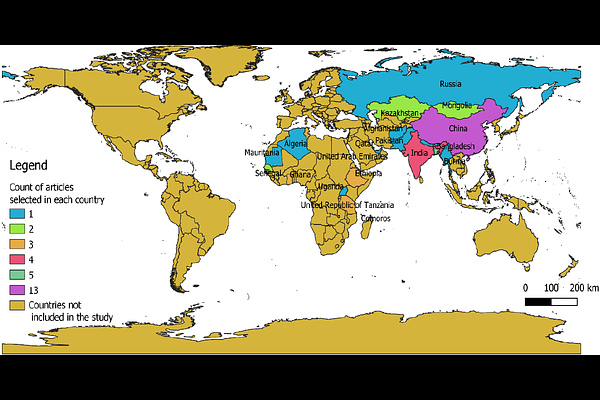Analysis of spatial and temporal risk of Peste des Petits Ruminants Virus (PPRV) outbreaks in endemic settings: A scoping review

Analysis of spatial and temporal risk of Peste des Petits Ruminants Virus (PPRV) outbreaks in endemic settings: A scoping review
Mwanandota, J. J.; Hakizmana, J.; Machuka, E.; Mdetele, d.; Okoth, E.; Omondi, G. P.; Chengula, A.; Kimera, S.; Muunda, E.; Misizo, G.
AbstractBackground: Sustained Peste des petits ruminants (PPR) circulation, as evidenced by surveillance, shows PPR endemicity in Africa and Asia. Regional transmission of PPR is enabled by joining numerous epidemiological factors. Spatial, spatiotemporal and transmission dynamics analytical methods have been used to explore the risk of PPR transmission. The dearth of information on the risk factors associated with spatiotemporal distribution and transmission dynamics of PPR at a regional scale is high. Through a thorough analysis of peer-reviewed literature, this study sought to evaluate the risks of Peste des Petit ruminant virus (PPRV) epidemics by noting distinctions of geographical and spatial-temporal approaches applied in endemic settings. Methods: A scoping literature review of PPR research publications that used spatial and spatiotemporal approaches to assess PPR risks in endemic areas was carried out using PubMed and Google Scholar data base. Results: Out of 42 papers selected 19 focused on Asia, 15 on Africa, and 8 had a global view. 61.9% used clustering analysis while 35.7% used spatial autocorrelation. Temporal trends were described by most studies at about 71.2% while modeling approaches were used by 13 articles (30%). Five risk factors evaluated include demographics and livestock-wildlife interactions (n = 20), spatial accessibility (n = 19), trade and commerce (n = 17), environment and ecology (n = 12), and socioeconomic aspects (n=9). Transmission dynamics of PPR was covered in almost all articles except 2 articles but it has linked all the risk factors. Conclusions: The review has contributed to the shifting and improvement of our understanding on PPR outbreaks in endemic settings and support evidence-based decision-making to mitigate the impact of the virus on small ruminant populations. Linkage of other risk factors to livestock trade which is the major driver of livestock movement has been shown to pose a significant risk of PPR epidemics in endemic settings. With many studies being found in Asia compared to Africa, future development of predictive models to evaluate possible eradication strategies at national and regional levels should also consider Africa.